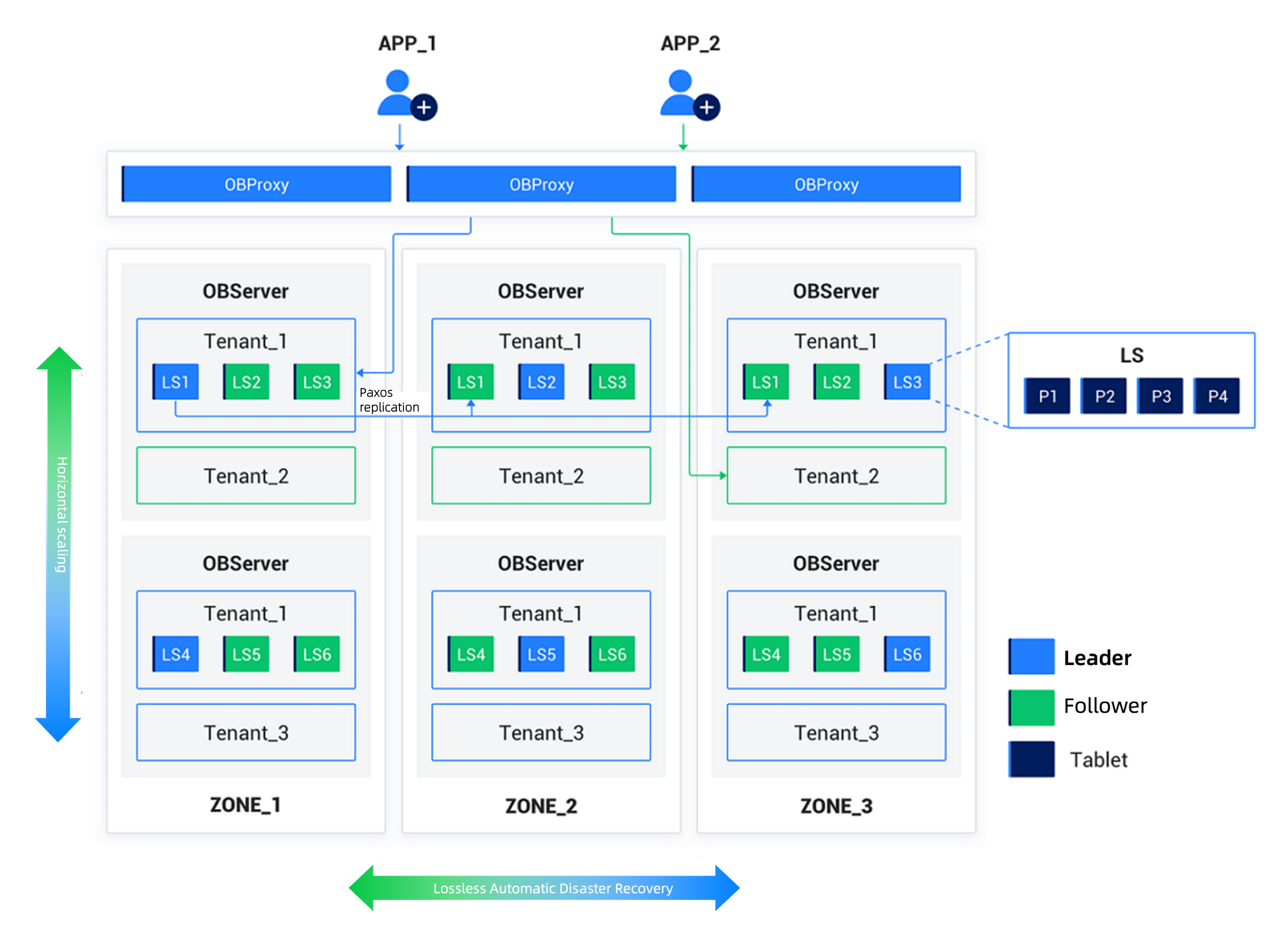English | 中文版
OceanBase Database is a distributed relational database. It is developed entirely by Ant Group. The OceanBase Database is built on a common server cluster. Based on the Paxos protocol and its distributed structure, the OceanBase Database provides high availability and linear scalability. The OceanBase Database is not dependent on specific hardware architectures.
- Transparent Scalability: 1,500 nodes, PB data and a trillion rows of records in one cluster.
- Ultra-fast Performance: TPC-C 707 million tmpC and TPC-H 15.26 million QphH @30000GB.
- Cost Efficiency: saves 70%–90% of storage costs.
- Real-time Analytics: supports HTAP without additional cost.
- Continuous Availability: RPO = 0(zero data loss) and RTO < 8s(recovery time)
- MySQL Compatible: easily migrated from MySQL database.
See also key features for more details.
See also Quick experience or Quick Start (Simplified Chinese) for more details.
You can quickly deploy a stand-alone OceanBase Database to experience with the following commands:
Note: Linux Only
# download and install all-in-one package (internet connection is required)
bash -c "$(curl -s https://obbusiness-private.oss-cn-shanghai.aliyuncs.com/download-center/opensource/oceanbase-all-in-one/installer.sh)"
source ~/.oceanbase-all-in-one/bin/env.sh
# quickly deploy OceanBase database
obd demoNote: We provide images on dockerhub, quay.io and ghcr.io. If you have problems pulling images from dockerhub, please try the other two registries.
-
Start an OceanBase Database instance:
# Deploy a mini standalone instance. docker run -p 2881:2881 --name oceanbase-ce -e MODE=mini -d oceanbase/oceanbase-ce # Deploy a mini standalone instance using image from quay.io. # docker run -p 2881:2881 --name oceanbase-ce -e MODE=mini -d quay.io/oceanbase/oceanbase-ce # Deploy a mini standalone instance using image from ghcr.io. # docker run -p 2881:2881 --name oceanbase-ce -e MODE=mini -d ghcr.io/oceanbase/oceanbase-ce
-
Connect to the OceanBase Database instance:
docker exec -it oceanbase-ce obclient -h127.0.0.1 -P2881 -uroot # Connect to the root user of the sys tenant.
See also Docker Readme for more details.
You can deploy and manage OceanBase Database instance in kubernetes cluster with ob-operator quickly. Refer to the document Quick Start for ob-operator to see details.
See OceanBase Developer Document to learn how to compile and deploy a manually compiled observer.
For future plans, see Product Iteration Progress. See also OceanBase Roadmap for more details.
OceanBase has been serving more than 1000 customers and upgraded their database from different industries, including Financial Services, Telecom, Retail, Internet, and more.
See also success stories and Who is using OceanBase for more details.
Please refer to System architecture for more information.
Contributions are highly appreciated. Read the development guide to get started.
OceanBase Database is licensed under the Mulan Public License, Version 2. See the LICENSE file for more info.
Join the OceanBase community via:
- Slack Workspace
- Ask on Stack Overflow
- Chinese User Forum
- DingTalk Group: 33254054 (QR code)
- WeChat Group (Add the assistant with WeChat ID: OBCE666)









